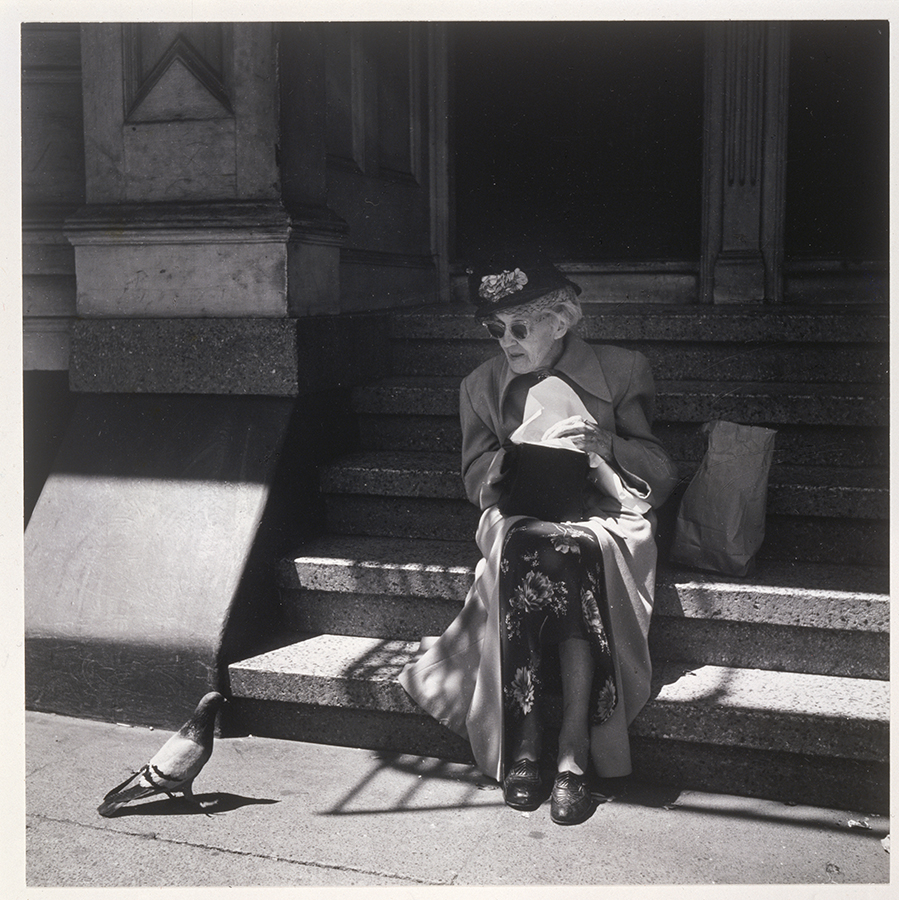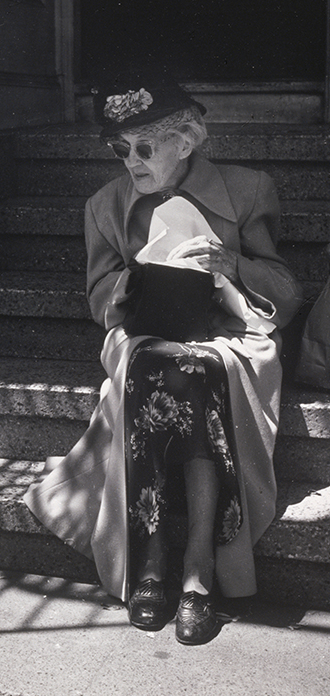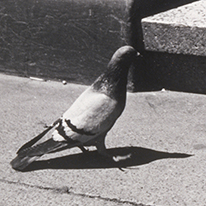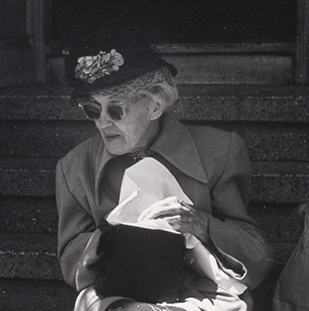
What conversations are happening in this photograph?
Imogen Cunningham was an influential West Coast photographer. Born in 1883, her career spanned nearly two-thirds of the 20th century, and explored topics from botanic textures, to magazine photography, to street documentary. With a keen eye and skill for capturing detail, her work produced sometimes unconventional but always rich portraiture.
When Cunningham captured Alone in the streets of San Francisco, she was an older woman. After taking nearly a decade’s break from her career to have three sons as a young woman, she returned to photography with internal drive in the 1920s. Fiercely independent and motivated to pursue her own career, her ambition grated at her husband and fellow photographer, Roi Partridge. In 1934, the couple divorced over an assignment Cunningham pursued for Vanity Fair without consulting him first. After their separation, Cunningham eventually moved alone to a cottage in San Francisco, where she continued her work and first instructed students at the California School of Fine Arts.
In 1946, a New York photographer named Lisette Model arrived in San Francisco for an exhibition of her work. She and Cunningham became fast friends, and over the course of several years the two “explored the streets of the city, Rolliflex cameras in hand,” where they photographed candid images of the city’s inhabitants. Although the two had different senses of what made good subjects– Model leaning towards the dramatic and Cunningham towards the pensive and aesthetic– they had a mutual admiration of each other’s work, which Model used to open up avenues for Cunningham in New York’s art scene in the late 1950s, where her late career would experience a renaissance.
Before her massive acclaim, however, was the photography of San Francisco natives.

Cunningham’s choice to name this work Alone is somewhat ironic because neither the woman nor the bird are truly alone. In fact, there are multiple levels of conversation occurring within this piece, between woman, bird, and photographer. Yet the photo still captures a sense of isolation.
Who is the lonely one?
The woman is dressed elegantly, in a way that makes her out of place against the San Francisco stoop she’s perched on. Her body is curled in on itself, her hands tugging her white parcel towards herself. Her knees are turned away from the pigeon even as she leans to look more closely at it, and her lips are pursed in appraisal. She might be withdrawing as the bird encroaches, or getting ready to thwack it away in this frozen moment. With her eyes obscured by sunglasses, her reaction is neutralized, and her feelings are unreadable.
What might she be guarding?

The pigeon is turned away from the camera, making it difficult to read. But its approach implies a goal: perhaps it assumes the woman will feed it. Perhaps it’s charting a route to her paper grocery bag on the steps behind. Still before the woman, it seems to be making a request of her, waiting for a response. It seems the pigeon will shortly be rejected.
Although the two are communicating, neither trusts or understands the other, effectively isolating them both.

On another level, Cunningham, as the photographer, is isolated by this photo. By taking an image of a stranger, she is catching a glimpse into their lives, a an intruder in this conversation.
In 1950, around the time this image was captured, Cunningham was 67. A photographic instructor and an aging divorcee, living alone, it’s possible that she saw herself in this woman, and out of a kindred sympathy decided to chronicle this encounter. Cunningham, a portrait photographer, had an uncanny ability to put her subject at ease and, photographing throughout the conversation, find unique traits in their personalities.
Perhaps the pigeon interrupted their conversation.
In this last interpretation, all of the actors in this photograph, seen and unseen, are in dialogue. Which leaves us, the viewer, as the silent onlooker in this conversation. Although we have the power to sympathize with each of the characters present, we’re unable to impact this scene: it’s already frozen. It is the audience who is isolated from this moment.
Who do you imagine is Alone in this work?